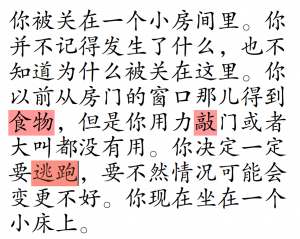
This is the first scene in the adventure text game Escape. The characters marked with red make up 5% of the text. Part of the goal with this game is to provide extensive reading in an interesting way.
We’ve all heard that reading is great for language learning, but what if I told you that most Chinese learners are actually going about it the wrong way?
By far the most common approach to reading is to focus mainly on your textbook and work your way through one or two books per semester, depending on how busy you are with other things.
This type of reading is called intensive reading and is usually done with specific learning goals in mind, and as a student, you strive to understand every single detail, maybe because it will be on a test later.
What you should actually spend as much time as you can doing is extensive reading, which is in many ways the complete opposite!
Tune in to the Hacking Chinese Podcast to listen to this article:
Available on Apple Podcasts, Google Podcast, Overcast, Spotify and many more!
If you’re only reading your textbook, you’re doing it wrong
The problem with intensive reading is that it gives you narrow exposure to a small part of the Chinese language. By relying on words introduced in earlier chapters, textbooks become more and more advanced, but as a student, you can only cope if you stay within the area the authors have fenced off for you. If you move to authentic texts at roughly the same level, you might feel like you’ve learnt nothing. I’ve written more about this in The illusion of advanced learning and what you should do about it.
That is to say: If you follow the pace of most language programs, you will spend almost all your time reading only a small amount of texts. This is not good!
An introduction to extensive reading for Chinese learners
I’m not saying you shouldn’t focus on intensive reading at all, but it certainly shouldn’t be the only thing you’re doing. In fact, in terms of time spent, extensive reading should take up most of your time. Extensive reading is about reading as much as possible, not necessarily with a specific goal beyond enjoyment in mind, and without striving to understand more than is necessary to enjoy what you’re reading.
There are several reasons extensive reading is important:
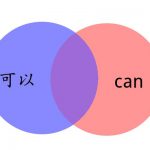 Focusing on few and short texts gives you a narrow proficiency which is not enough to deal with real, authentic Chinese. Reading more but easier texts gives you a broader foundation. For example, if you were to read text that is relatively easy, you might be able to cover ten times as much text compared to if you read something where every other word is new to you. That means you’d see common words and grammar patterns ten times as often. This type of exposure is necessary to build accurate mental models for how the language works.
Focusing on few and short texts gives you a narrow proficiency which is not enough to deal with real, authentic Chinese. Reading more but easier texts gives you a broader foundation. For example, if you were to read text that is relatively easy, you might be able to cover ten times as much text compared to if you read something where every other word is new to you. That means you’d see common words and grammar patterns ten times as often. This type of exposure is necessary to build accurate mental models for how the language works.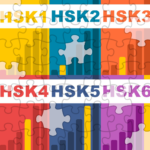 By following a textbook series, you will learn many low frequency words before you have learnt many high frequency words, violating one of the most important principles when learning a language. In some textbooks, this problem is extreme. A good example is that textbooks teach you a bunch of idioms or fancy names for Chinese dishes, while omitting words like “light bulb” and common variations of very common words you’ve already learnt. It’s also amazing how many common words are skipped in the lists for proficiency exams such as the HSK or TOCFL.
By following a textbook series, you will learn many low frequency words before you have learnt many high frequency words, violating one of the most important principles when learning a language. In some textbooks, this problem is extreme. A good example is that textbooks teach you a bunch of idioms or fancy names for Chinese dishes, while omitting words like “light bulb” and common variations of very common words you’ve already learnt. It’s also amazing how many common words are skipped in the lists for proficiency exams such as the HSK or TOCFL.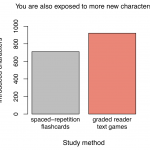 Intensive reading does not show you the variety of contexts in which a word can be used. Even though some textbooks offer more than one example, this is still far from enough. Sure, you can get the gist of how a word is used by someone telling you about it, such as saying that 奇怪 can mean both “to be strange”, but also “to think that something is strange”, but you’re much more likely to learn such things if you read ten times as much text. Learning words through reading has many advantages over more explicit learning.
Intensive reading does not show you the variety of contexts in which a word can be used. Even though some textbooks offer more than one example, this is still far from enough. Sure, you can get the gist of how a word is used by someone telling you about it, such as saying that 奇怪 can mean both “to be strange”, but also “to think that something is strange”, but you’re much more likely to learn such things if you read ten times as much text. Learning words through reading has many advantages over more explicit learning.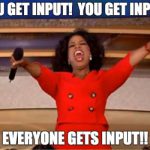 Reading is not very enjoyable if you have to look look up a couple of words in every sentence. Even if textbooks try to spread new words out in a text, it’s not unusual to have several new words in each sentence. This type of reading is taxing and not very fun. What you should get instead is comprehensible input, which stresses the importance of at least roughly understand what you’re reading without relying on a dictionary all the time.
Reading is not very enjoyable if you have to look look up a couple of words in every sentence. Even if textbooks try to spread new words out in a text, it’s not unusual to have several new words in each sentence. This type of reading is taxing and not very fun. What you should get instead is comprehensible input, which stresses the importance of at least roughly understand what you’re reading without relying on a dictionary all the time. Extensive reading offers opportunities to consolidate what you already know. Even if you know almost all words, there’s a big difference between “can just barely recall them on an exam” and “know them so well that you don’t have to think about them”. Seeing them used over and over again is great way to get to know them better. This will also do wonders for your reading speed, which is quite important when taking Chinese proficiency exams.
Extensive reading offers opportunities to consolidate what you already know. Even if you know almost all words, there’s a big difference between “can just barely recall them on an exam” and “know them so well that you don’t have to think about them”. Seeing them used over and over again is great way to get to know them better. This will also do wonders for your reading speed, which is quite important when taking Chinese proficiency exams.- Incidental learning becomes possible with comprehensible input. In short, incidental learning is when you learn something, such as a word or grammar pattern, without really trying to. Because you understand most of what’s going on, you can often guess the meaning of words and patterns even if you haven’t seen them before. This requires you to understand almost everything, though, so the texts you’re reading can’t be too difficult! Let’s look closer at what that means.
How difficult is difficult? The case for 98%
So, how difficult should the text be for incidental learning to be possible? This has been researched a lot and knowing 98% of the words seems to be the most common answer.
That sounds like a lot, and you might think that the difference between 80%, 90% and 98% is not that big. But it is.
John Pasden over at Sinosplice wrote an article titled What 80% Comprehension Feels Like in which he quotes Marco Benevides, who has written an excellent demonstration of what different levels of comprehension feels like (check his presentation here). In the text that follows, the author has inserted nonsense words at a frequency of 2%, 5%, 10% and 20% to simulate 98%, 95%, 90% and 80% known words respectively.
This is 98%:
You live and work in Tokyo. Tokyo is a big city. More than 13 million people live around you. You are never borgle, but you are always lonely. Every morning, you get up and take the train to work. Every night, you take the train again to go home. The train is always crowded. When people ask about your work, you tell them, “I move papers around.” It’s a joke, but it’s also true. You don’t like your work. Tonight you are returning home. It’s late at night. No one is shnooling. Sometimes you don’t see a shnool all day. You are tired. You are so tired…
It’s easy to see that reading is meaningful at 98%. If you read more, you would probably be able to guess the meaning of many of the unknown words, but even if you don’t, if you read an entire novel with this level of understanding, you would be able to understand and enjoy it.
This is 95%:
In the morning, you start again. You shower, get dressed, and walk pocklent. You move slowly, half- awake. Then, suddenly, you stop. Something is different. The streets are fossit. Really fossit. There are no people. No cars. Nothing. “Where is dowargle?” you ask yourself. Suddenly, there is a loud quapen—a police car. It speeds by and almost hits you. It crashes into a store across the street! Then, another police car farfoofles. The police officer sees you. “Off the street!” he shouts. “Go home, lock your door!” “What? Why?” you shout back. But it’s too late. He is gone.
While this still makes sense and you can guess what’s going on, it’s easy to see how you can lose the thread in a longer story if every paragraph is like this. Still, reading at this level is sort of okay, and you can still guess the meaning of many words. Can you guess what words hide behind “fossit”?
Now let’s look at the text when 90% of the words make sense:
“What’s prippy fy?” you ask yourself. Suddenly, a man runs by. He is viggling toward the crawn kofoon. There is blood all over his shirt. “Baboot!” you shout, but he doesn’t stop. You follow him. Outside the kofoon, you stop. A loopity is lying on the ground. She is not moving. “Hey!” you shout. “Are you OK?” She doesn’t answer. Her nawies are closed. Chay her fingers are moving. Open, close; open, close. “She’s alive!” you say to yourself. “No! Don’t gleep her!” someone frickles. You look up. Three people are waving at you from across the street
Now it starts being difficult to understand what’s going on, but wait until we get to 80%:
“Bingle for help!” you shout. “This loopity is dying!” You put your fingers on her neck. Nothing. Her flid is not weafling. You take out your joople and bingle 119, the emergency number in Japan. There’s no answer! Then you muchy that you have a new befourn assengle. It’s from your gutring, Evie. She hunwres at Tokyo University. You play the assengle. “…if you get this…” Evie says. “…I can’t vickarn now… the important passit is…” Suddenly, she looks around, dingle. “Oh no, they’re here! Cripett… the frib! Wasple them ON THE FRIB!…” BEEP! the assengle parantles. Then you gratoon something behind you…
The texts above are excerpts from Extensive Reading: Benefits and Implementation. Benevides, Marcos. J. F. Oberlin University, Tokyo. Presented at IATEFL 2015 in Manchester. The original text is from Zombies in Tokyo by Andy Boon.
Imagine reading a long text written like this. Or perhaps you don’t need to imagine it; this is what it feels like reading the next chapter in your textbook! Note that this is 80%, which sounds like you’d be understanding almost everything. Imagine what 60% is like.
Text at this difficulty level is not suitable for extensive reading and you need scaffolding to make sense of it. There are ways to make sense of difficult texts, of course, especially by using digital tools such as pop-up dictionaries. Read more in The new paperless revolution in Chinese reading.
Teachers underestimate the difficulty of texts
After having worked with professional development for Chinese teachers for many years, apart from learning the language myself, I can tell you that teachers tend to underestimate the difficulty of the texts they hand out to students. They think that, surely, this text should be okay for them. But it often isn’t, it’s way too hard.
In case you’re a native speaker of Chinese and have forgotten what it’s like to read Chinese without understanding almost everything, John Pasden created a Chinese story where characters have been swapped out for nonsense characters at rates that simulate 80%, 95% and 98% known vocabulary. I strongly suggest you check it out:
There is no magic number
The question whether extensive reading is the best way of expanding vocabulary and exactly how much you should understand already is not very important, because the exact number isn’t the point. Depending on the text, the student and the tools or scaffolding being used, 95% might be fine. With some studying, 90% works too.
The point is that the more you need to study (look things up, learn new words, check grammar), the less text you cover. I’m not saying that you should only read texts where you understand 98%, but I am saying that you should do that as much as you can.
When you feel you have the resources, energy and time to go for something more difficult, by all means do that. But don’t do only that. Most teachers and students do just that, though, which is part of my motivation for writing this article.
The 98% figure refers to unaided reading and shows that you really need to understand almost everything to be able to figure out and learn the few words you didn’t already know. However, nothing says you have to read completely unaided, so the take away is more in the direction of “the more you understand, the better; 98% is great if you can get it”.
For most students, this means graded readers, until you reach a fairly advanced level and can start reading authentic texts without needing to look up every other word.

Image source: zein.se. The graph shows number of learnt characters (x-axis) and reading comprehension (y-axis).
Do 2,000 characters really result in 98% comprehension?
While we’re at the topic of percentages and comprehension, it’s time to debunk a myth.
Most learners of Chinese have seen some numbers thrown around when it comes to reading comprehension. A very common claim is that learning 1,000 characters will give you around 80% reading comprehension or that 2,000 characters will give you 98%.
Or something along those lines. So does that mean that once you hit 2,000 characters, you’ll be able to get that holy grail of understanding 98% of typical texts?
Unfortunately, no. There are several problems with such claims:
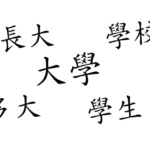 Meaning in Chinese is mostly conveyed using words, not single characters. Most words contain two characters and knowing the constituent characters doesn’t necessarily mean that you know the word. Then there’s grammar, collocations, idiomatic expressions, cultural knowledge and so on, none of which are included in the number of characters or words you know. In short, knowing the characters does not mean you understand the text! See Creating a powerful toolkit: Characters and words.
Meaning in Chinese is mostly conveyed using words, not single characters. Most words contain two characters and knowing the constituent characters doesn’t necessarily mean that you know the word. Then there’s grammar, collocations, idiomatic expressions, cultural knowledge and so on, none of which are included in the number of characters or words you know. In short, knowing the characters does not mean you understand the text! See Creating a powerful toolkit: Characters and words.- Knowing 80% of the characters will not give you 80% reading comprehension, even if you know all the words that can be created with them (which is highly unlikely), all the grammar and so on. If you read the quoted 80% known words passage from Zombies in Tokyo above, can you truly say that you understand 80% of the text? Certainly not. If you imagine a standard reading test with questions at the end, you are not likely to answer 80% of them correctly. Perhaps you wouldn’t even get a single question right, so at least in some cases, knowing 80% of the language can still mean 0% comprehension.
Many students have the illusion that cramming a certain number of characters or words will give them a high level of reading comprehension. This is just wrong, at least if pursued in isolation. Sure, I have argued that vocabulary is extremely important, but I also advocate to read and listen a lot.
In general, reading more is much more likely to lead to better reading ability compared to cramming words from a list. It’s also more likely to be good for your Chinese in general.
Conclusion
So, let’s recap. If you know less than 98% of the vocabulary in a text, you’re going to need to actually study the text to learn from it. If you’re good at reading and inferring meaning from context, you can still learn a lot. But the more time you spend flipping through a dictionary or trying to figure out a tricky sentence structure, the less text you will read in total.
If you only read hard texts, you will not see enough text in Chinese to learn how the words are used in different situations and you will end up with an advanced but very narrow proficiency.
By comparison, if your comprehension level is close to 100%, it means that you should be able to pick up the few remaining percent simply by reading. Since you understand so much of the text, you will often be able to infer the meaning of unknown words, and even if you can’t always do that, you will often be able to enjoy reading the text anyway because you understand most of it.
Still, it can be hard to find texts where you understand almost all the words. I’ve already recommended graded readers, but also check out The 5 best Chinese reading resources for beginners if you’re looking for more ideas.
Editor’s note: This article, originally from 2016, was rewritten from scratch in November 2020.

Tips and tricks for how to learn Chinese directly in your inbox
I've been learning and teaching Chinese for more than a decade. My goal is to help you find a way of learning that works for you. Sign up to my newsletter for a 7-day crash course in how to learn, as well as weekly ideas for how to improve your learning!


19 comments
What an awesome article – this should be required reading for all language learners. Thanks for writing.
Spot on! Why isnʻt this site more popular amongst not just Chinese, but ALL language learners!? This should be one of the first go-to resources for teachers. I have tactfully pointed several of my Chinese professors toward this website, but the vast majority of them believe in teaching us Chinese the way they learnt it. Natives learning their own language over the course of 18 years, 24/7 is way different than a foreigner.
I believe for English, Listening Practice Through Dictionary have the same method. I use this to improve my skill and desperate to find this kind of resource for Chinese. If you have any resources like this for learning Chinese, please write that in your next article. Thank you so much for your hard work and sharing your knowledge.
Hi
Would you consider writing an article on input systems? Which one would you suggest for advanced users and how much usage is required for investment to pay off?
I assume you mean non-mainstream input methods? If typing efficiency is what you’re after, you will need to type an awful lot for any change to be worthwhile. It’s possible to type fairly fast using abbreviated Pinyin and I think this is enough for almost every learner (so I probably won’t write about other methods). However, other methods can be used for other purposes. I considered learning a component based system to help me remember characters better, but discarded the idea because it would simply take too much time and wasn’t really worth it.
Thanks for the reply, Olle. For now, given that I’m only learning reading Chinese and not even pronunciation (I do keep the 80% phonetic part in mind when I learn and keep track when its a semantic vs phonetic component) so I guess spending time learning typing method would probably be spent better learning pronunciation first.
I still find the gap between language learner resources (i.e. Mandarin Companion grader readers) and more native material (i.e. Taiwanese children’s books to be daunting).
I’ve read through the two or three Mandarin Companion readers that exist for traditional characters at the intermediate level and those are pretty easy to get through, I would say my comprehension is even higher than 98% as I only had to look up maybe one or two words in the whole book.
Now, I am slugging through 百步蛇娶新娘 which is a Taiwanese Aboriginal story that I happened to find at the library. It’s a children’s book, full of pictures, and I’m still slugging away at maybe 80% comprehension…. luckily its a short enough book that I’ll get through it before giving up – but I could see how this could be painful for anything much longer.
Yes, this gap is a real problem, but things are being done to bridge it. Some of them, such as the text games I’ve created with Kevin over at WordSwing, are good examples, although they are only available in simplified at the moment. There are also plenty more graded readers than there used to be, and we have sites like The Chairman’s Bao too.
I want to point something out, though, that I only realised long after I started reading Taiwanese children’s books: They are not as easy as you think. In other words, don’t compare what you’re reading to what you would expect to find in a similarly looking book in English. The Chinese version is probably much harder, or at least I’ve found this to be the case in general.
There might be many causes for this, but I suspect that there’s a stronger ambition to educate the child and use more varied and literary expressions. Many books in the West are meant to entertain children primarily, not teach them new words. I have gone back and looked at some of the children’s books I read at your level and found that many of them contain lots of words and idioms I have never seen since. While they are of course easier than the average novel, they are not much more difficult than easy novels for adults or young adults. This won’t help you much, but it might make you feel better!
I am doing this month’s Reading Challenge (March 2020). So according to this article, I’m at less than 80% comprehension (more like 25%!). However, even if this is classified as “intensive reading”, I think reading is excellent daily habit to build and eventually I’ll learn the HSK 1 words such that my level of comprehension will increase (and higher HSK levels and so on).
Yes, intensive reading is better than no reading. Also, it’s incredibly hard (impossible) to find enough extensive reading material before you know a few hundred characters. As soon as you can access graded readers (Mandarin Companion has several on the 150-character level), I suggest you devour them, rather than pursuing ever harder listening material, at least for the bulk of your reading!
The first book I tried to read was “the three little pigs”, ended up with about 60 new pleco flashcards and a headache..
I found some graded readers from Sinolingua on Taobao that I like, collections of short, contemporary stories. Follow the HSK vocab, which I feel is sometimes too formal, but because they’re fairly short can read a whole story before your head hurts.
Yes, reading children’s books is usually a bad idea. They are much, much harder than most people think, especially in Chinese. This merits an article at some point, but graded reader are so much better for extensive reading than children’s books. I mean, even some non-fiction for adults is easier to read than fiction for kids. 🙂
This was really an amazing piece, and for the first time I completed your Article at once thanks to the attached Audio that really enhanced and encouraged my completion of this article. Shows how efficient it can be when we aid our learning with other methods, I realized the audio aided my completion of this very detailed article on Comprehensive Input just as Listening and Reading a lot aids learning or mastering a Language. That’s how we ought to learn (if we want to learn effectively without getting bored or giving up). Comprehensive Listening could also play a major role in our mastery journey, I found LingoChinese的直播 to do the the trick on this one and also Chinese talk podcasts where they use 比较简单的词交流. Skritter is also very good for those seeking Chinese writing and Character Mastery Skills but those on a Budget I recommend TrainChinese(writer)…so on. I loved this once again, wanna ask lastly is there a sequel to this Piece?.
What would a good study method using extensive reading with graded-materials look like? Read the material and then move on? Read, re-read? Analyze for grammar? Focus on pulling out vocab for later study?
I think it depends on your preferences and personality, but in general, I would say read as much as possible, re-read as much as you like without feeling too bored, and also listen to the books. Repetition is only bad if you find it boring. That being said, if you like studying grammar or vocabulary, by all means extract things to learn, but don’t feel that you have to. The more I learn about these things, the more I favour just more (quantity, extensive reading/listening) over obsessing over less (quality, intensive reading/listening). Hope this helps!
Hi, great article – I have a quick question. Because Chinese isn’t a phonetic language, we can’t pick up the pronunciation of a word through extensive reading, only its definition. So would you suggest looking up every new word while extensively reading in order to know their pronunciations, or just ignore this – improving reading comprehension and speed at the cost of being unable to speak new words?
The idea with extensive reading is that you’re focusing on content where you know as much as possible, preferably 98-99% of the vocabulary. That means you shouldn’t come across that many words you don’t know, although there will of course be some. For Chinese, some of the words you encounter will consist of characters you don’t know, but this is an even smaller percentage. IF key to understanding the text or if you see such characters more than once, I would stop to look up how to pronounce them, or at least save them somewhere for later checking so as not to interrupt the reading too much if you think this is a problem. I sometimes read books in Pleco’s file reader and while I almost never come across characters I don’t know what they mean, I do tap characters often just to verify the pronunciation!
Hi Olle, I feel like I came across a long list of activities for teachers to use with graded readers on this site at some point. I don’t think the list was hosted by your site though. Any ideas? Thanks in advance!
Mandarin Companion has some educational material for their readers (and readers in general), maybe check with them? A quick search gave me this, for example: https://mandarincompanion.com/wp-content/uploads/2020/08/How-to-Use-Graded-Readers-to-Build-Students-Fluency-Mandarin-Companion.pdf